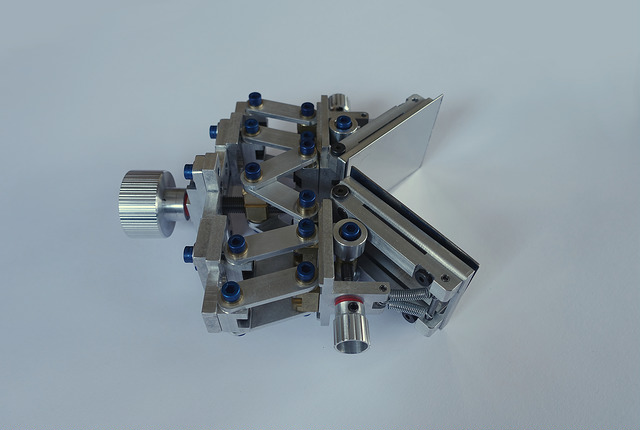
Maxwell Hoaglund
Maxwell Hoaglund
Lives and works in Minneapolis
Mentor: Jasmine Tang
Biography
I’m an interactive artist and arts engineer. I earn my living working with other artists to leverage digital technology to realize their visions. I was educated in sculpture at MCAD and spent nearly a decade as a software developer and designer.
My education as an artist (and concurrent employment as a docent at the Walker Art Center) left me alarmed about the power dynamics of communitarian art practice and hesitant to produce material artwork for display in galleries. Later, my software industry experience highlighted the privilege of digital production, and the strange garden it happens in. Struggling with the ‘bubble’ of tech solutionism resulted in personal ideals of accessibility and transparency.
Within the last few years, I’ve reassessed my concerns and ideals and cautiously reintegrated myself with artmaking and its community. My dread of aesthetic power has matured into a desire to discover how others navigate it and entangle myself with problematic dynamics.
Artist Statement
It’s important to scrutinize institutions and experiences that are meant to be seen as decentralized, neutral, and free of material cost. A spoken conversation, an email thread, freely shared advice, a rote format like a resume, or the experience of seeing an image. Digitally networked culture presents a varied and imposing array of these articles and threatens to outpace structural analysis. I make it my business to contribute to a collective response to that intimidating state of affairs. My work is accompanied by the fear of a future where this analysis will be outmoded or automated.
I work with a carefully-selected collection of media; I pick media that are undergoing change in terms of the way the products of their domain are seen to contribute to culture broadly. These transitional media have a precious liminal capacity to tell us something about their coming progeny. By way of an example, the sound of a traditional phone call has a tonality that is baked into the way its content is transmitted, and this tonality is mapped to a certain intense experience. The phone call is intimate but has a wild quality of flying in out of the blue. It invites you to gamble your time on whomever might be on the other end of it. Opting into the social contract vaguely proposed by the call is a tenuous, murky step into a shared space you’re unable to visualize. Over time, we will slowly lose the tonality of this strange space as technology intervenes into the experience of the call- the massage of fidelity will eventually obscure the risk and consent dynamics of the call without resolving them. Perhaps, while we still have access to phone calls that sound like phone calls, we might leverage them to distribute a warning.
From Max’s Proposal
The objective of this work is to represent a fictional scenario where the only action which marks the passage of time is the alteration of categorical structure within an encyclopedic collection of objects. This is a future-fiction where the encyclopedia has become the clock, and the only moment is the moment of classification.
A viewer enters the space occupied by this piece, and they see a cataloged list of objects and their properties, projected on the wall. The list is complete with images. There’s a vase, which is known and explained by its history. There’s a small mound of blue powder, identified as cobalt and described chemically. There’s a handwritten letter, described materially according to its paper and ink. There is a dark, perforated box with an internal lamp that alters its color whenever the box is moved. There are many more. Detail is heaped onto the objects- their qualities and interrelations are given great depth in this list; there are footnotes and mapped connections. Beside the list is a more readable paragraph, enumerating a point of view that speaks of how and why to order the list as it is. It is undersigned but not dated. A diagram is attached, mapping items from the list to positions on a grid. The viewer notices a physical interface which enables them to scroll past this collection of data and view similar ones, though the connection between them isn’t totally clear. Continuing on, the viewer happens upon a physical incarnation of the grid they saw diagrammed, with all the objects from the list represented. The collection is isolated and intimate. As they look on, a signalling tone is heard. A broad, thin sheet of sand falls from the ceiling, lightly coating the collection. A stylist emerges from a nearby door and begins to carefully rearrange the objects, removing some and adding others. The catalog has changed. The viewer returns to the list they saw first, and it has been replaced with a new one featuring new logic, new interrelations. Someone has sent a change order to re-categorize the array of objects to grasp at and capture new meaning- there is some new theory. Things have been reconciled and moved forward. The same variety, but under a new veil of idealized orders and connections ready for review.